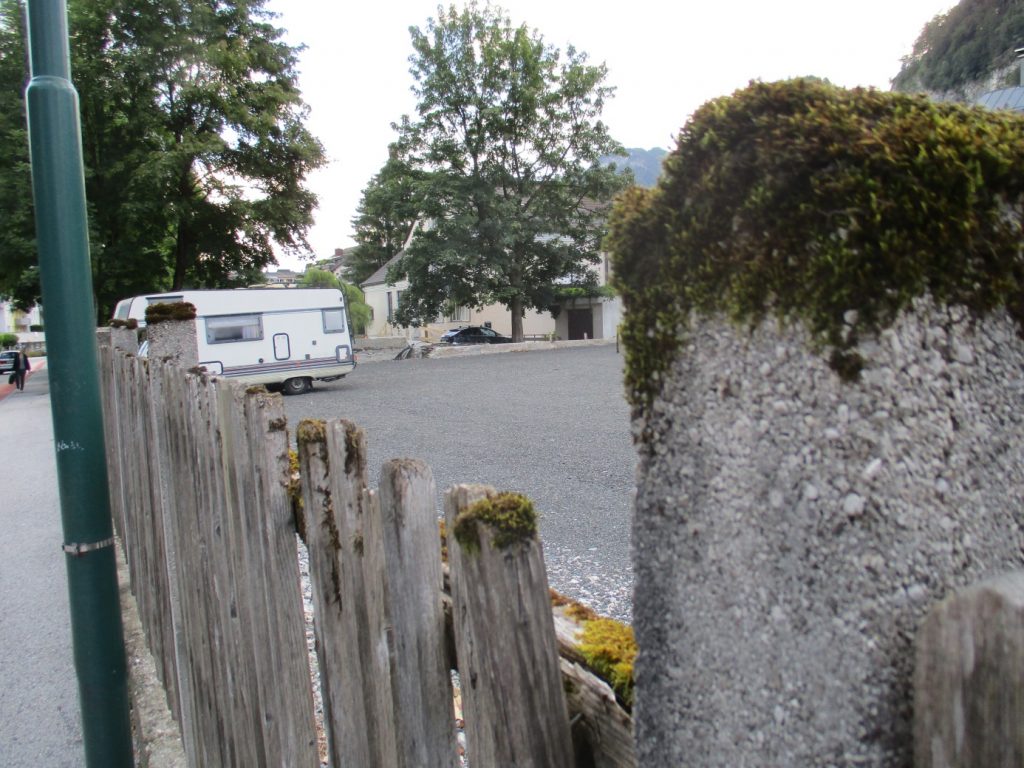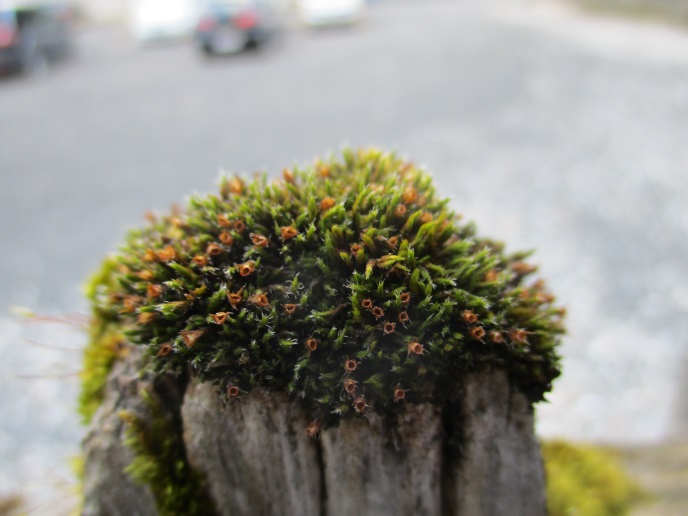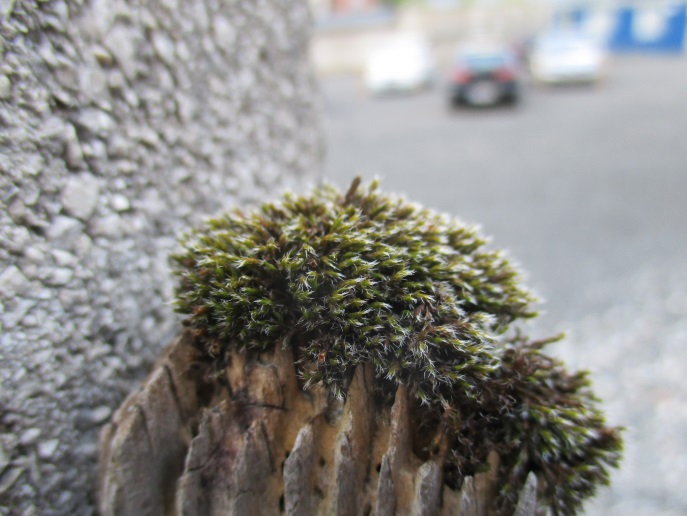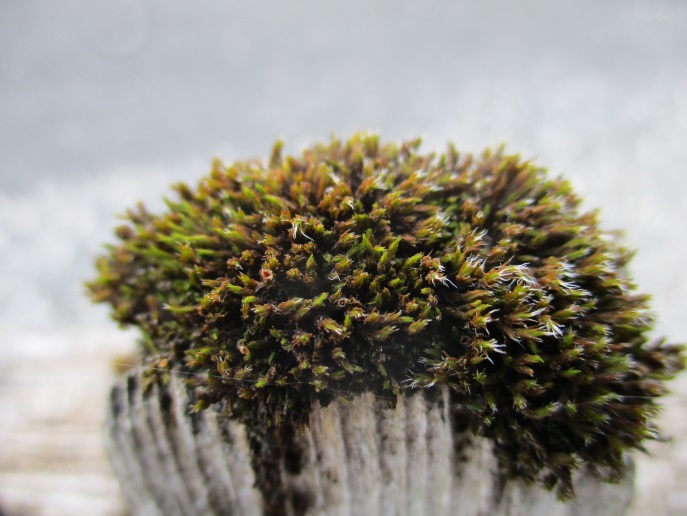Recently in Kufstein, the home of Austrian bryologist Wolfgang Hofbauer, the demolition of an attractive old building and clearing of trees and other plants from the land, leaving a bare gravel patch used as a parking space, did have one interesting outcome: The new clearing led Wolfgang’s eye to a decaying wooden fence between concrete posts. Both the posts and the fence are partly covered in bryophytes, but among them, Wolfgang was very surprised to find the moss Schistidium growing on the old wood as well as on the concrete.
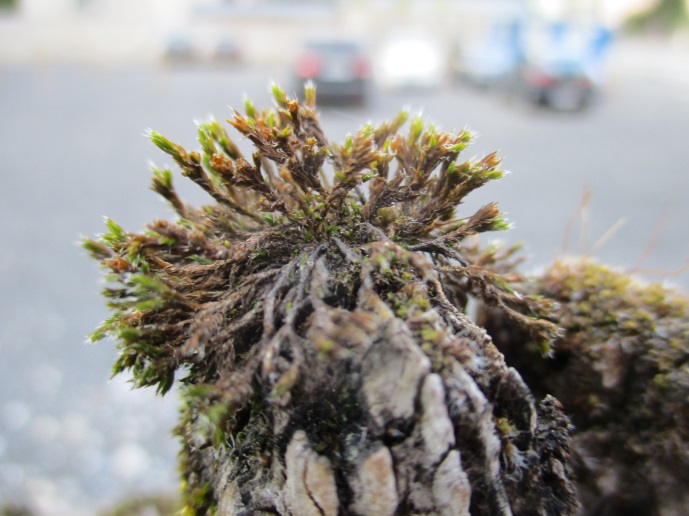 In the bryological literature, the only reference to the plant growing on wood is a rare occurrence of Schistidium apocarpum, on lime-impregnated tree bark. The situation in this Kufstein parking lot seems unique, with at least two different species of Schistidium on the wood (although species identification is ongoing). Other more typical residents of old wood, which are also present, include Leucodon sciuroides, Orthotrichum affine and Hypnum cupressiforme. However, the unique assemblage is unlikely to last, as the climatic regime at the place will have changed following the removal of the trees, and the newly exposed rotten fence will probably soon be replaced.
In the bryological literature, the only reference to the plant growing on wood is a rare occurrence of Schistidium apocarpum, on lime-impregnated tree bark. The situation in this Kufstein parking lot seems unique, with at least two different species of Schistidium on the wood (although species identification is ongoing). Other more typical residents of old wood, which are also present, include Leucodon sciuroides, Orthotrichum affine and Hypnum cupressiforme. However, the unique assemblage is unlikely to last, as the climatic regime at the place will have changed following the removal of the trees, and the newly exposed rotten fence will probably soon be replaced.
Meanwhile, however, we wonder if similar unlikely assemblages of mosses are being observed elsewhere, and if there is an explanation for any potential changes in habitat?
Botanics Story and images provided by Wolfgang Hofbauer
Related literature
Wolfgang Karl Hofbauer, Laura Lowe Forrest, Peter M. Hollingsworth, Michelle L. Hart. 2016. Preliminary insights from DNA barcoding into the diversity of mosses colonising modern building surfaces. Bryophyte Diversity and Evolution 38(1).
Sam Bosanquet. 2010. Schistidium species reports, in: Atherton, Bosanquet & Lawley, Mosses and Liverworts of Britain and Ireland a field guide, British Bryological Society.
In plain sight – the mosses that grow on British walls. http://stories.rbge.org.uk/archives/19957
Hidden diversity in unexpected places – moss growth on modern building surfaces. http://stories.rbge.org.uk/archives/17489

